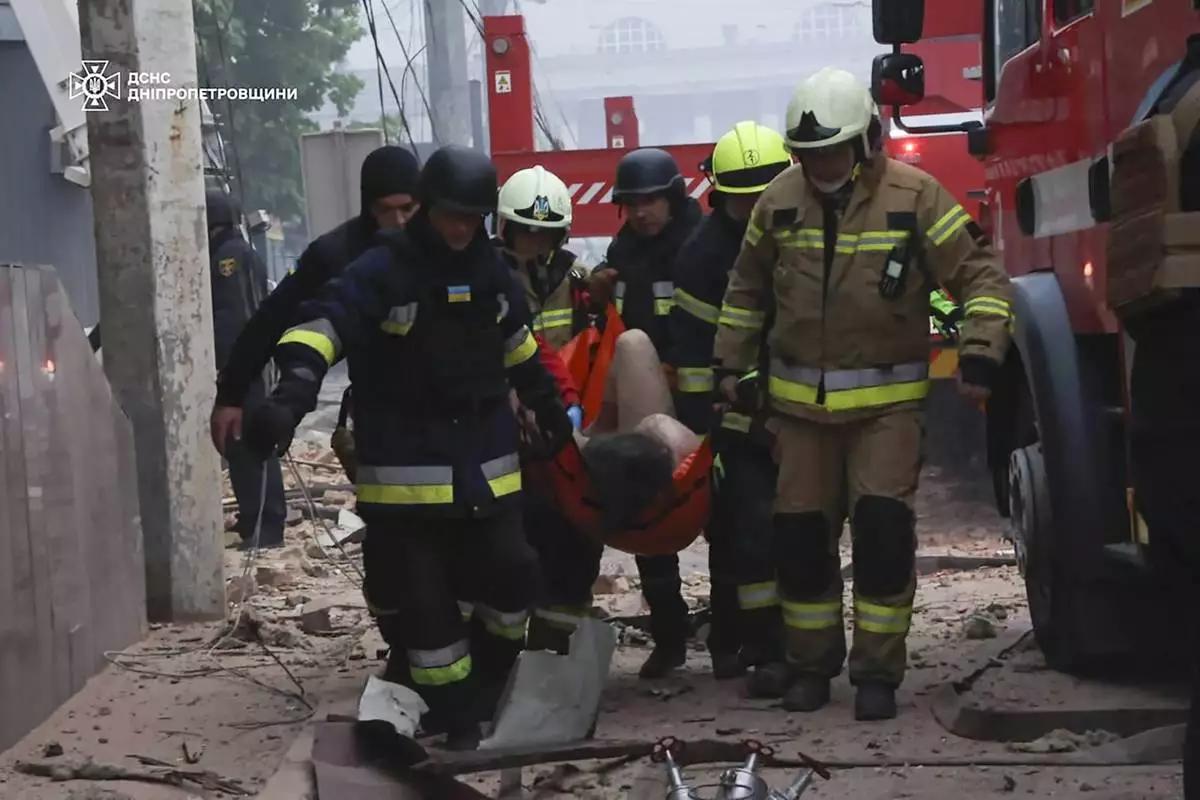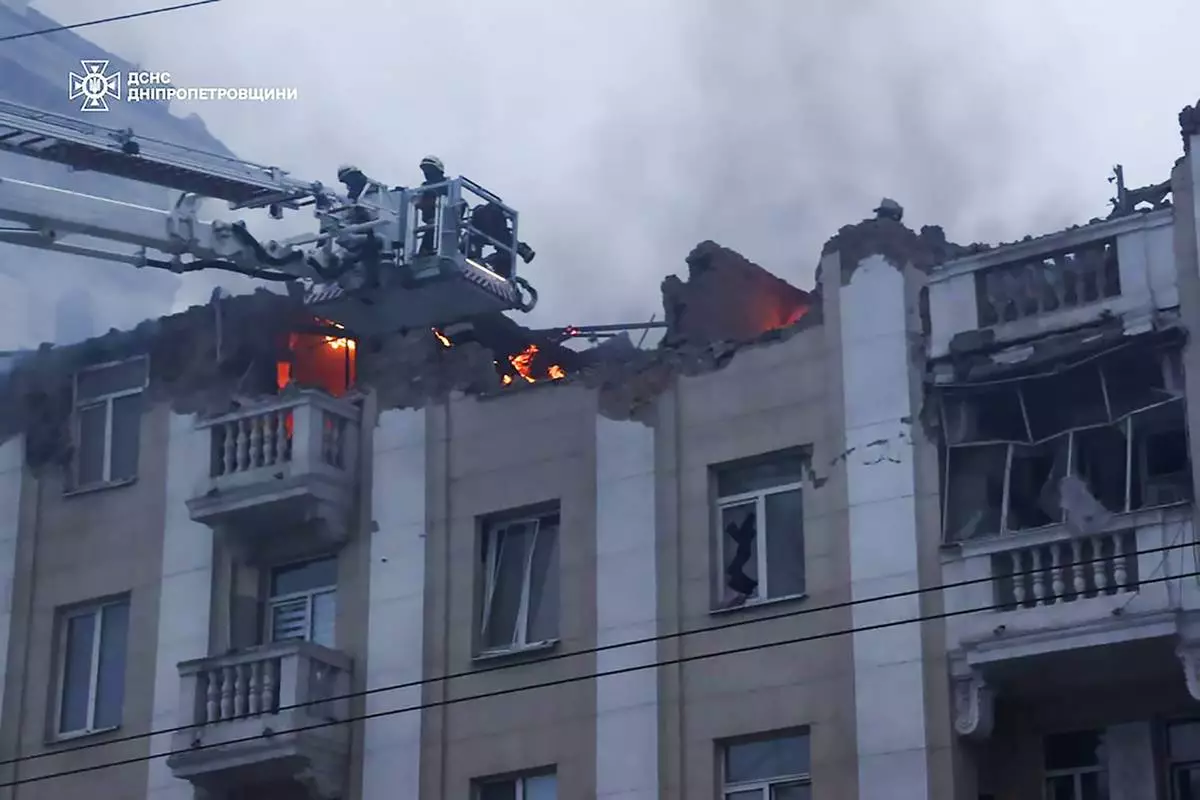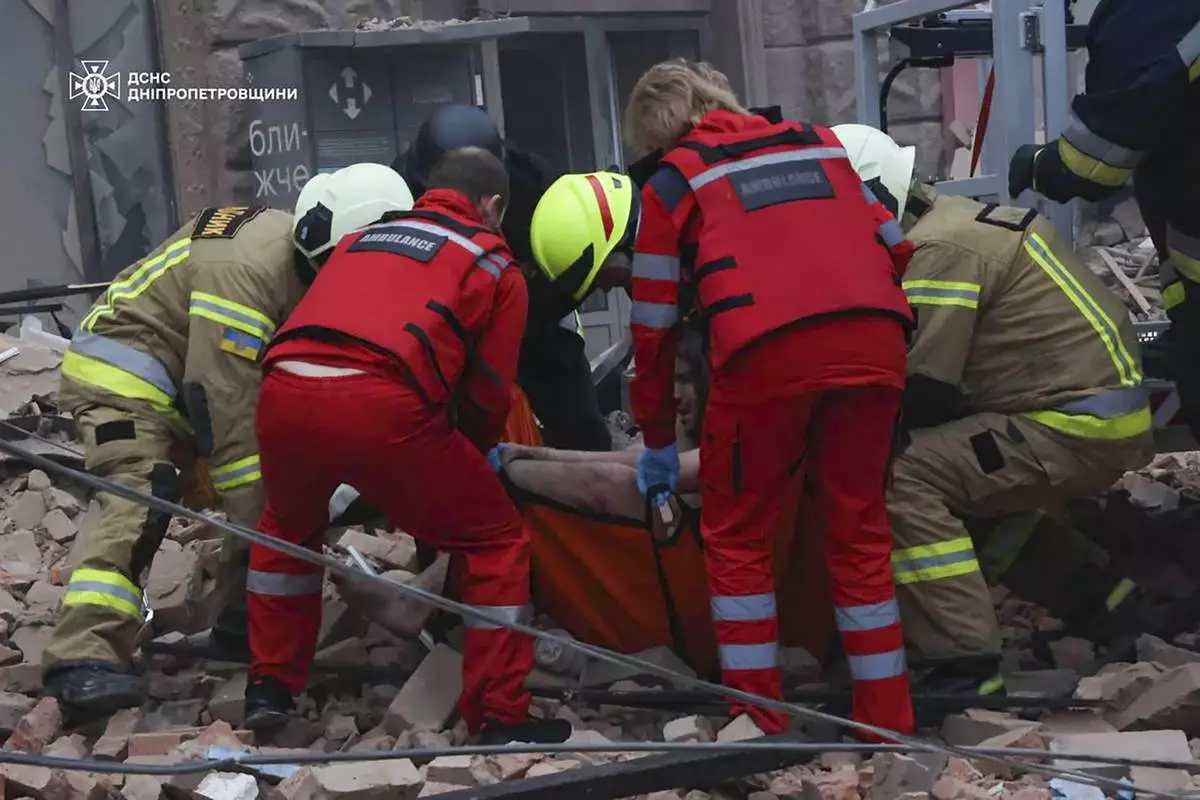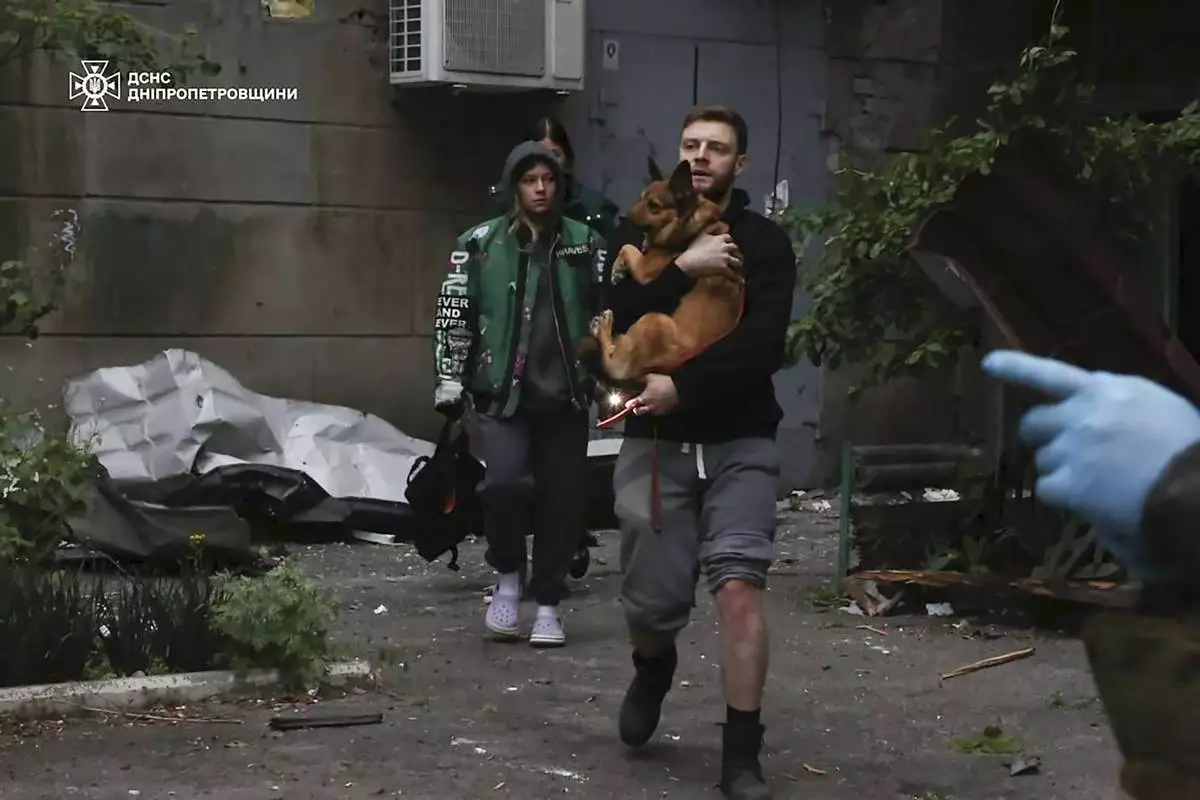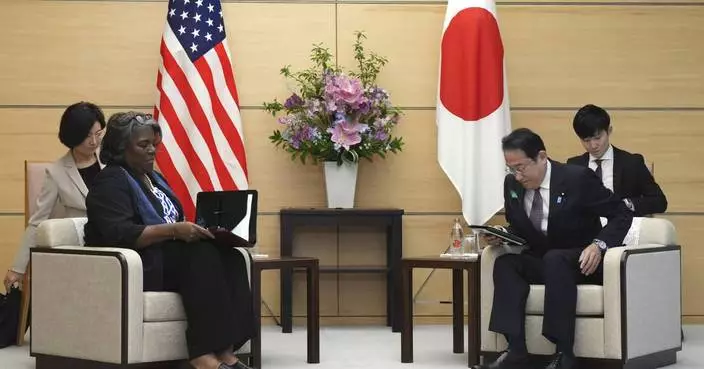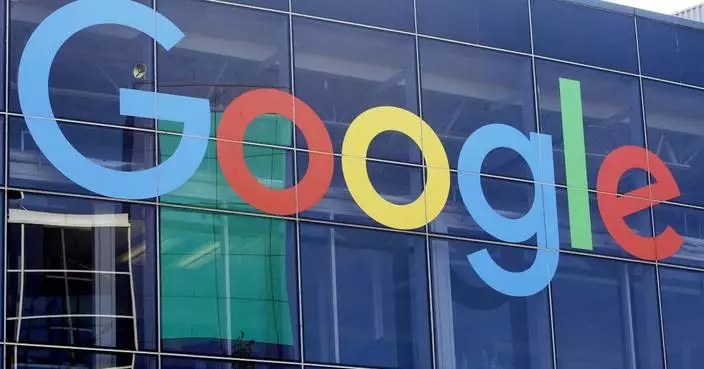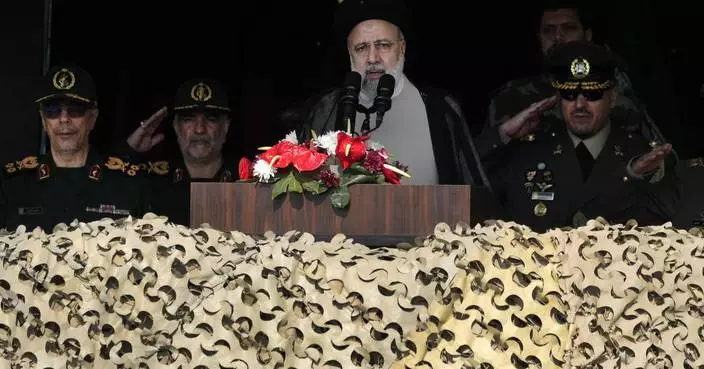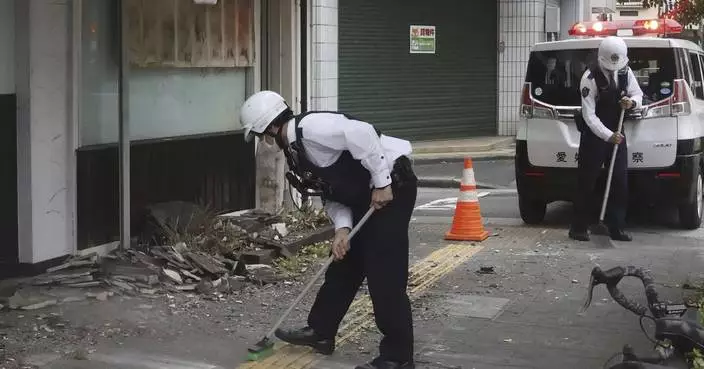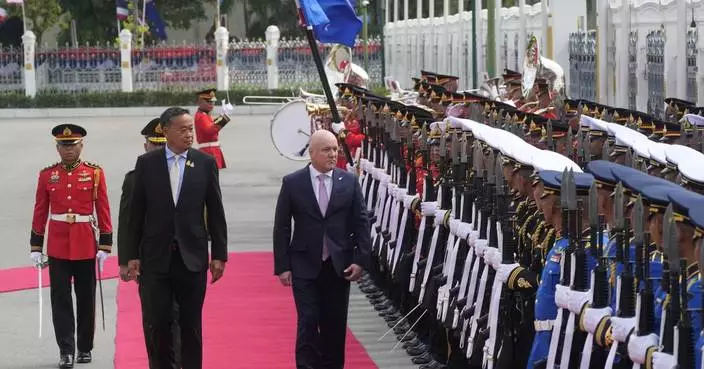President Donald Trump struck a hard line against North Korea's nuclear weapons program Monday and urged Japan to do the same as he closed out two days of talks, dinner and golf diplomacy with ally Japan.
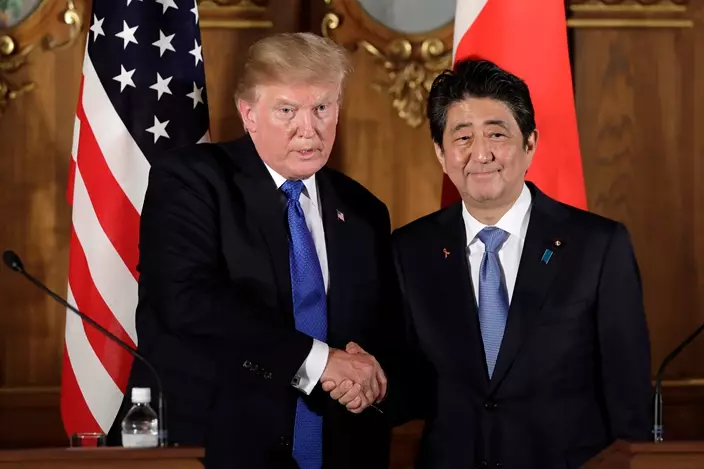
President Donald Trump, left, shakes hands with Japanese Prime Minister Shinzo Abe during a joint news conference at the Akasaka Palace, Monday, Nov. 6, 2017, in Tokyo. (Kiyoshi Ota/Pool Photo via AP)
The president refused to rule out eventual military action against the north and exhorted dictator Kim Jong Un to stop weapons testing, calling the recent launches of missiles over Japanese territory "a threat to the civilized world and international peace and stability."
"We will not stand for that," Trump said at news conference with Japanese Prime Minister Shinzo Abe. "The era of strategic patience is over. Some people say my rhetoric is very strong but look what has happened with very weak rhetoric in the last 25 years."
The president did not deny reports he was frustrated that Japan did not shoot down a ballistic missile North Korea recently fired over its territory. Trump instead declared that Abe "will shoot 'em out of the sky when he completes the purchase of lots of additional military equipment from the United States."
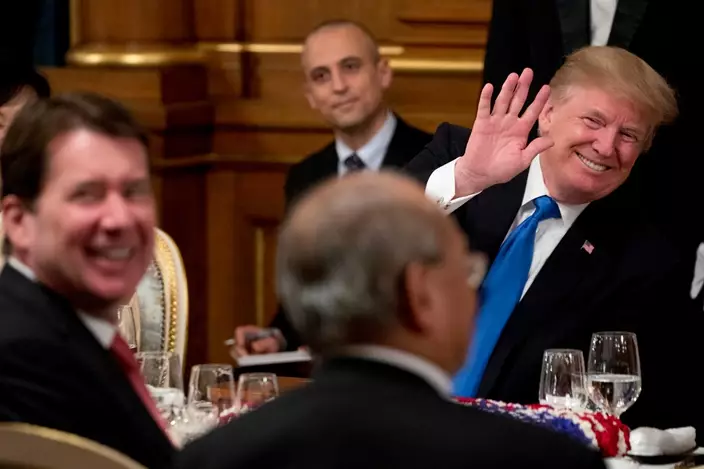
U.S. President Donald Trump, right, accompanied by U.S. Ambassador to Japan William F. Hagerty, left, waves to a guest during a state banquet at the Akasaka Palace, Monday, Nov. 6, 2017, in Tokyo. (AP Photo/Andrew Harnik)
Trump said Abe had agreed to purchase "massive amounts of military equipment, as he should," arguing the U.S. makes the "best military equipment, by far."
Japan's constitution was revised after World War II to include a clause renouncing war and the country spends only about 1 percent of its GDP on defense. Abe has slowly tried to remove some of the pacifist constraints and is already seeking money to purchase upgraded SM3 interceptors with greater accuracy and range, as well as other advanced missile defense systems.
Under its constitution, Japan can shoot down a missile only when it is aimed at the country or if debris is falling on its territory. But some hawkish members of Abe's Liberal Democratic Party say that it may be possible to shoot down a missile headed toward Guam if it causes an existential threat to the U.S. as Japan's ally. Experts say that is questionable.
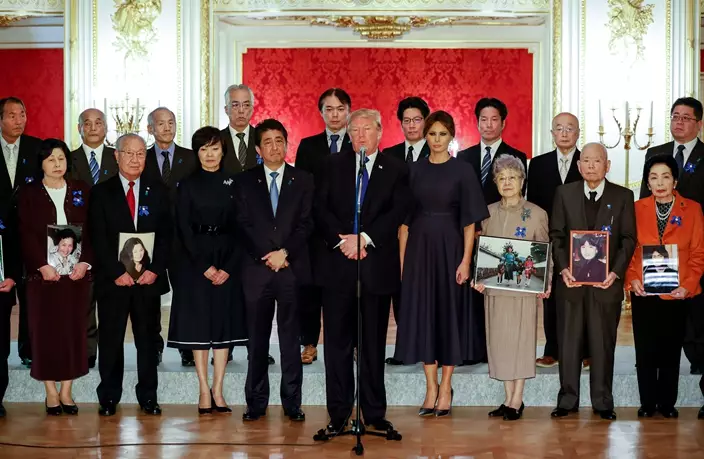
U.S. President Donald Trump speaks during a meeting with families of Japanese abducted by North Korea in Tokyo Monday, Nov. 6, 2017. They are, from left in front row, Hitomi Soga, Shigeo Iizuka, Abe's wife Akie, Abe, Trump, U.S. first lady Melania, Sakie Yokota and Akihiro Arimura. (Kimimasa Mayama/Pool Photo via AP)
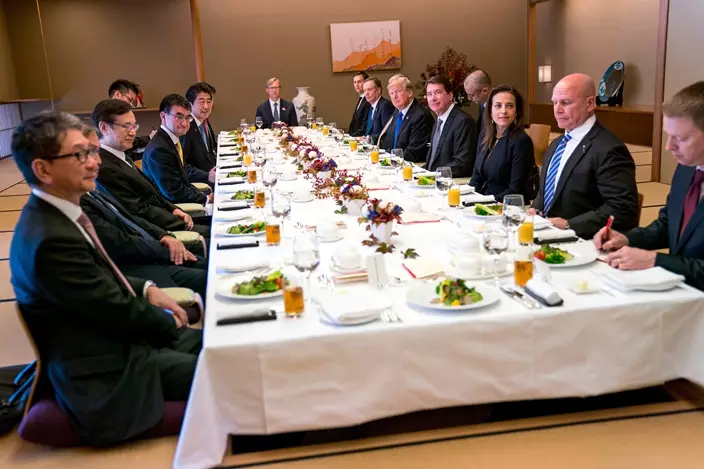
U.S. President Donald Trump, fifth from right, and Japanese Prime Minister Shinzo Abe, fifth from left, sit at a table during a luncheon at Akasaka Palace in Tokyo Monday, Nov. 6, 2017. (Doug Mills/Pool Photo via AP)
As part of his Asia tour, Trump will visit South Korea, where he will forgo the customary trip to the demilitarized zone separating north and south — a pilgrimage made by every U.S. presidents except one since Ronald Reagan as a demonstration of solidarity with the South. Instead, Trump planned to visit Camp Humphreys, a military base about 40 miles south of Seoul.
U.S. and South Korean officials have said the base visit is meant to underscore the countries' ties and South Korea's commitment to contributing to its own defense. Burden-sharing is a theme Trump has stressed ever since his presidential campaign.
Trump and South Korea's liberal President Moon Jae-in agree on the need to pressure the North with sanctions and other deterrence measures. But Trump has warned of unleashing "fire and fury," threatened to "totally destroy" the North, if necessary, and repeatedly insisted that all options are on the table. Moon, meanwhile, favors dialogue as the best strategy for defusing the nuclear tension and vehemently opposes a potential military clash that could cause enormous casualties in South Korea.

U.S. President Donald Trump holds up his glass for a toast during a state banquet at the Akasaka Palace, Monday, Nov. 6, 2017, in Tokyo. Trump is on a five-country trip through Asia traveling to Japan, South Korea, China, Vietnam and the Philippines. (AP Photo/Andrew Harnik)
Trump backed up his strong words about North Korea by sending a budget request to Capitol Hill on Monday for $4 billion to support "additional efforts to detect, defeat, and defend against any North Korean use of ballistic missiles against the United States, its deployed forces, allies, or partners."
And as he departed for South Korea, he tweeted that Moon is "a fine gentleman," adding, "We will figure it all out!"
On a personal level, Trump and Moon have not developed the same close rapport as Trump has with Abe or even China's Xi Jinping. Part of Moon's mission during the visit will likely be to strengthen his personal ties with Trump, said Michael O'Hanlon, a senior fellow in foreign policy at the Brookings Institution.
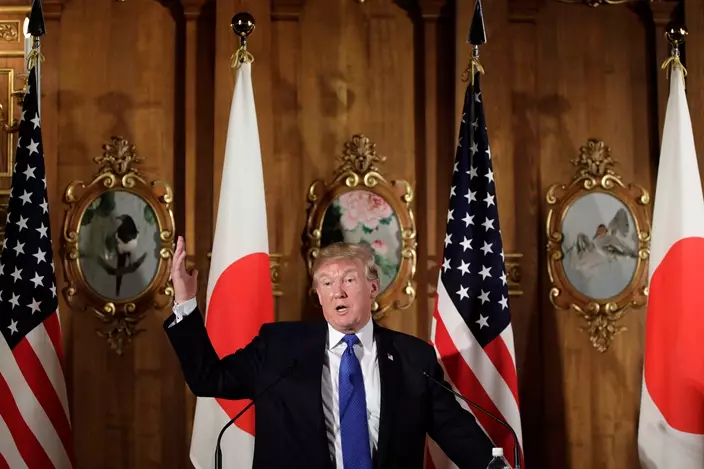
President Donald Trump speaks, accompanied by Japanese Prime Minister Shinzo Abe during a joint news conference at the Akasaka Palace, Monday, Nov. 6, 2017, in Tokyo. (Kiyoshi Ota/Pool Photo via AP)
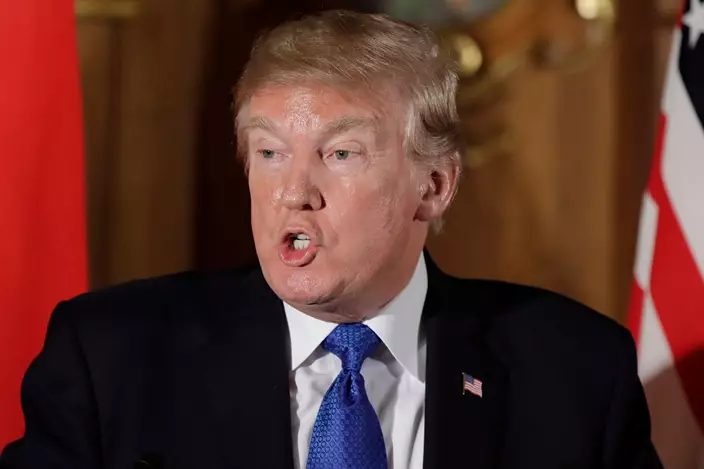
President Donald Trump speaks, accompanied by Japanese Prime Minister Shinzo Abe during a joint news conference at the Akasaka Palace, Monday, Nov. 6, 2017, in Tokyo.(Kiyoshi Ota/Pool Photo via AP)
"Now poor President Moon is playing catch-up ball because everyone acknowledges that he's not bonding quite as much with Donald Trump as the rest of the region," said O'Hanlon. He said Moon could face pressure "to deliver a stronger relationship" whereas "in most other parts of the world, people are trying to keep their distance from Donald Trump."
Trump will spend Tuesday in meetings with Moon, hold a joint press conference and be feted at a state dinner.
Trade also is expected to be a major topic of discussion: Trump has considered pulling out of the United States-Korea Free Trade Agreement, also known as KORUS, blaming it for the U.S.-South Korea trade deficit.
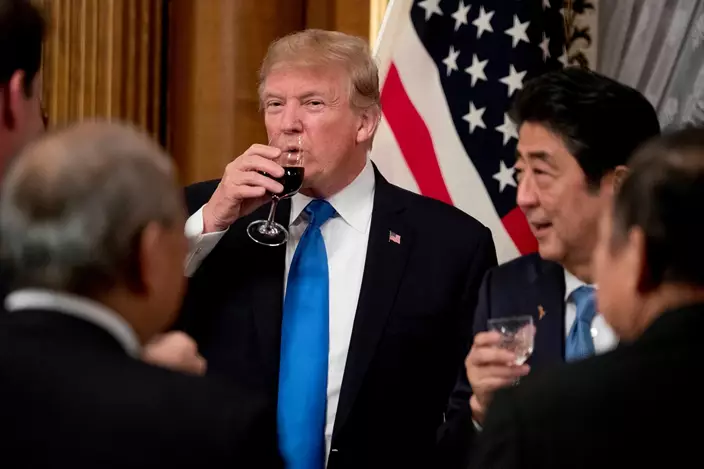
U.S. President Donald Trump and Japanese Prime Minister Shinzo Abe, right, share a drink after toasting each other during a state banquet at the Akasaka Palace, Monday, Nov. 6, 2017, in Tokyo. (AP Photo/Andrew Harnik)
Trump and Japan's Abe have forged strong bonds through meetings, phone calls and on the golf course — a friendship that was on display at a Monday banquet that was the final event of Trump's stop in Japan. In a toast, Trump told about how he was bombarded by phone calls from world leaders after he was elected president. Trump said he returned just a few — including one from Abe, who said he wanted to meet with Trump as soon as possible. Trump responded: anytime.
Trump, as he told it, wasn't aware of the protocol against president-elects meeting with world leaders. Trump added that by the time he called Abe to wave him off, Abe was already en route to New York. "So I saw him and it worked out just fine," Trump recalled.
Abe called Trump his "dear friend" and praised the benefits of what he called "golf diplomacy."

U.S. first lady Melania Trump uses a brush to write Japanese words "Peace" watched by Japanese Prime Minister Shinzo Abe's wife Akie, right, as they attend a calligraphy class of the 4th grader at Kyobashi Tsukiji Elementary School in Tokyo, Monday, Nov. 6, 2017. (AP Photo/Shizuo Kambayashi)



